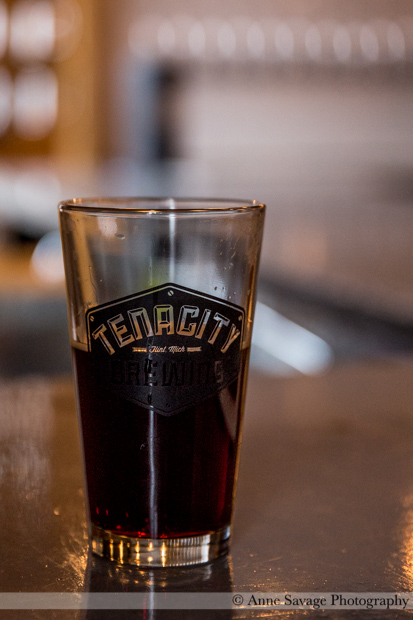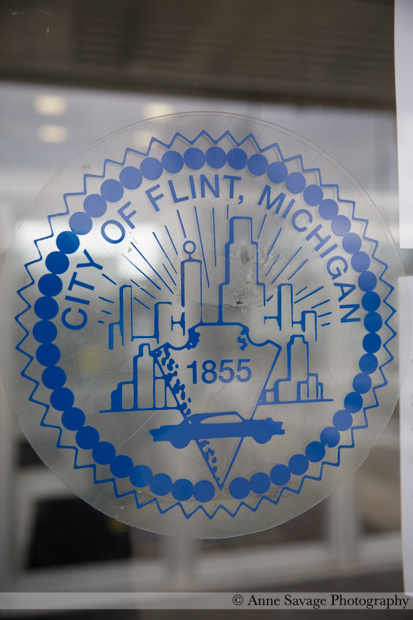 Anne and I have spent a great deal of time thinking about Flint and how everyday life has changed for the people there. After all, it’s one thing to have to drink bottled water after the Snyder administration poisoned the water coming from your tap. But it’s entirely another thing to have to use bottled water for everything else except flushing your toilet or washing your car. So many of the routine, everyday activities we do around the house have changed for people in Flint:
Anne and I have spent a great deal of time thinking about Flint and how everyday life has changed for the people there. After all, it’s one thing to have to drink bottled water after the Snyder administration poisoned the water coming from your tap. But it’s entirely another thing to have to use bottled water for everything else except flushing your toilet or washing your car. So many of the routine, everyday activities we do around the house have changed for people in Flint:
- Using bottled water to wash dishes.
- Cooking with bottled water.
- The risk of Legionnaire’s Disease or accidental ingestion of lead-tainted water has many people avoiding showering or bathing with water from their taps.
- Did you know that cats and dogs are sensitive to lead poisoning just like humans are?
Yesterday we decided to head up to Flint to get some photos and talk to some of the folks who live there. What we found was both heartbreaking and uplifting.
We left the Ann Arbor area under sunny skies and a slight warmth in the air. As we traveled north on Michigan’s scandalously terrible roads, the closer we got to Flint, the less sun we saw. By the time we reached the city, it was overcast, gloomy, and cold. As we drove around town, we saw nearly nobody on the streets. It seemed like a ghost town where all the buildings and homes are there but no people can be found.
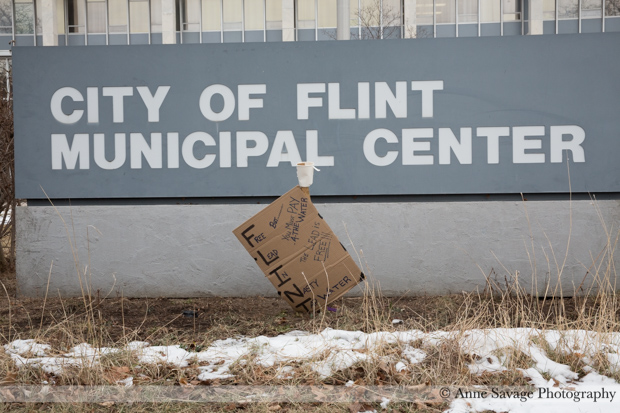
We stopped in at the aptly-named Tenacity Brewery and ordered a couple of beers from the self-described “barkeep” Luke Leffle. The brewery has been open for about a year and Luke himself will soon open a high-end coffee shop called Wildroot Coffee in the upscale Flint area known as the College and Cultural area in Flint’s East Village. Born and raised in Flint, Luke moved back to the city last spring with his wife and three young kids aged 2,5, and 7.
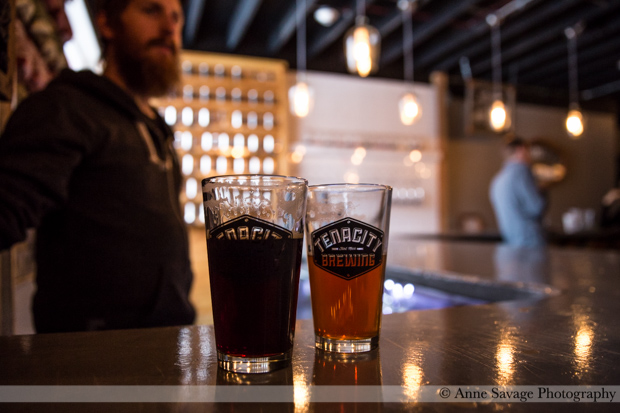
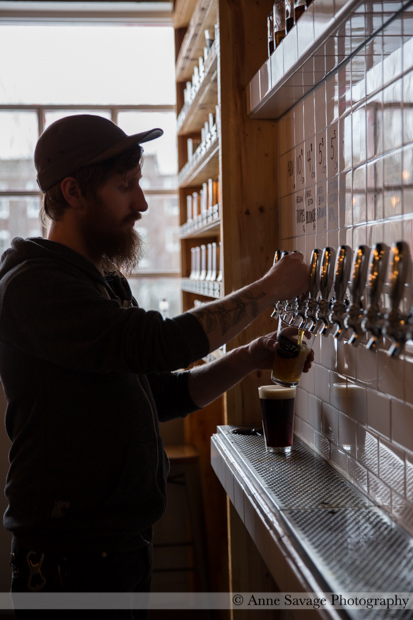 We asked Luke if the brewery has had any problems with lead in their water. Because of they installed a large filtration system from the beginning, they have not had to worry about lead in the water-intensive brewing process. Nonetheless, every time news breaks about Flint’s water problems, they see a short-term downturn in business. “People are making too big a deal about this, in my opinion,” Luke told us. “But the locals know things are okay so they keep supporting us.”
We asked Luke if the brewery has had any problems with lead in their water. Because of they installed a large filtration system from the beginning, they have not had to worry about lead in the water-intensive brewing process. Nonetheless, every time news breaks about Flint’s water problems, they see a short-term downturn in business. “People are making too big a deal about this, in my opinion,” Luke told us. “But the locals know things are okay so they keep supporting us.”
For most restaurants and bars and other eating & drinking establishments, lead isn’t really a problem, particularly for new businesses. Lead has been banned in “pipe, any pipe or plumbing fitting or fixture, any solder, or any flux” since 1986 when Congress passed Section 1417 of the Safe Drinking Water Act: “Prohibition on Use of Lead Pipes, Solder, and Flux“. Unfortunately, the perception of a problem when the media “blows it up”, to use Luke’s words, is enough to have a negative impact on businesses and Luke conceded that he’s a bit nervous about opening a coffee shop in the middle of the lead crisis Flint is facing. This isn’t helpful in a city that’s already reeling from a cratered manufacturing base and the lasting impacts of the Great Recession.
Although lead isn’t much of an issue for most businesses, at least not in the long term, the same cannot be said about the residential areas in Flint. Here is where the lead contamination is much more likely to be a serious problem. This is because the lead problem in Flint isn’t because their water source, the Flint River, is polluted. And it’s not because the city is sending lead-contaminated water out of their water treatment plant. It’s because the chemistry of the Flint River is simply incompatible with the aging plumbing systems in many of the older homes. A mineral scale and layer of biofilm had formed over the decades that shielded the water from lead-containing components in water lines, faucets, and other fixtures. As the corrosive river water dissolved this protective layer, lead began to leach into the water.
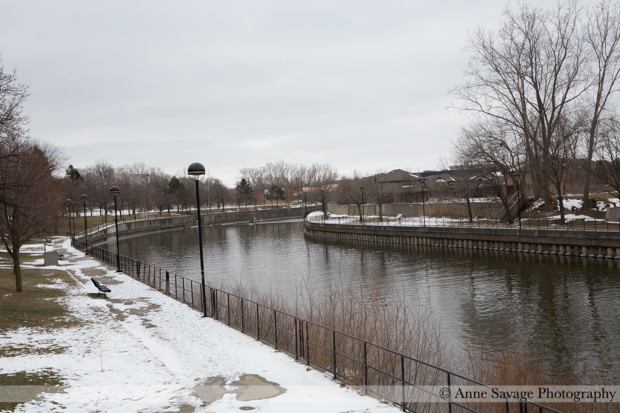
The Flint River
But the problem isn’t in every home. One home may be completely fine with no lead problem whatsoever while the home next door may have dangerously high levels. The number of homes impacted may, in fact, be relatively small. But that does not mitigate the problem because if even a small percentage of people are impacted, the resulting health impacts are so serious and so debilitating and so irreversible that a problem for a few is a problem for all. This is why efforts like those of the administration of Kettering University to downplay the severity of this issue are so offensive and harmful. It’s irrelevant that the numbers are relatively small or that other communities have similar or even worse problems. The problems in Flint are the direct result of a policy – Emergency Management – and the Snyder administration owns it. Without the actions of Flint’s long line of Emergency Managers, we would not be discussing this and the hashtag #FlintWaterCrisis wouldn’t be a thing.
It’s also important to note that, even though it appears that lead levels are beginning to abate thanks largely to a return to water drawn from Lake Huron, much of the damage may have already been done. And because lead is quickly absorbed into the bones, children and adults who have been exposed in the past before the problem became public may not show elevated blood lead levels now.
As Anne and I drove around Flint, we came across a small caravan in one neighborhood. In the front and back were State Police cars with their flashers on. In between them was a panel truck loaded with cases of bottled water. Members of the National Guard, carrying the water in old school Flint Journal paper carrier’s bags slung across their shoulders and bundled up in the cold air, went from door to door, knocking and shouting “Water Service!” as they distributed clean drinking water in the aging downtown neighborhood.
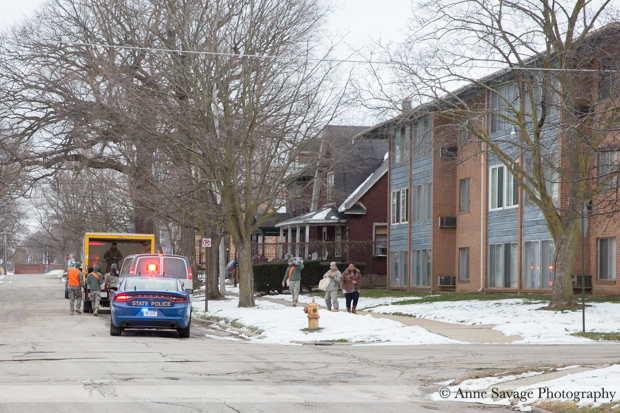
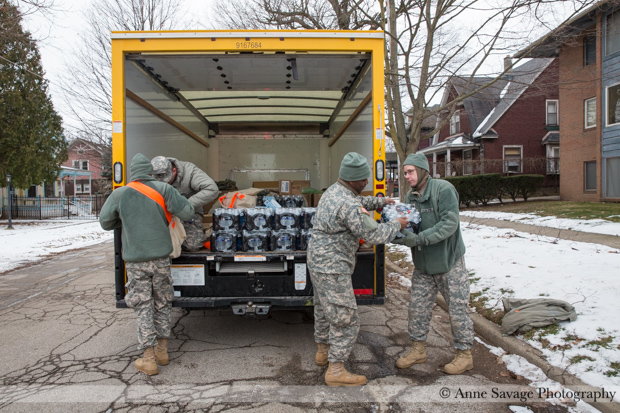
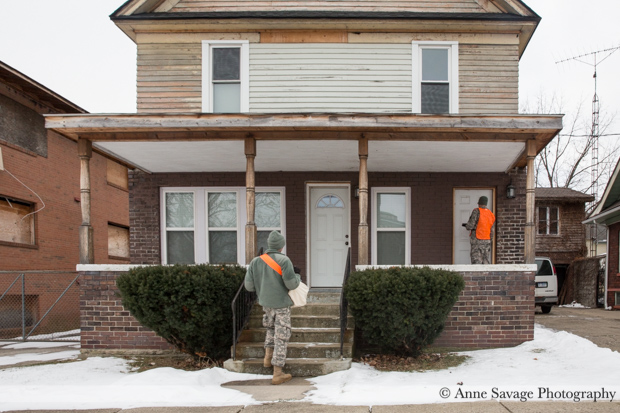
They told us that they were distributing water as long as there was enough light to see, starting at 8 a.m. and continuing until 7 or 8 p.m. when the sun went down. “Yesterday we gave water to around 13,000 people,” one Guardsman told us. While we talked with him, an African American woman came up and asked if they could bring water to an elderly man in her apartment building who was too frail to be able to carry the water himself. One of the Guardsman cheerfully grabbed two cases of water and followed her into the building.
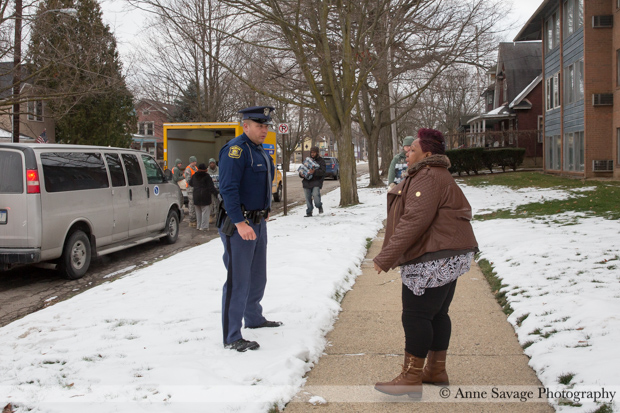
We headed north from the downtown area into some of the more impoverished neighborhoods. Here, depending on where you are, anywhere between 40% and 90% of the homes are abandoned, many boarded up but just as many with broken out windows, missing doors, and stripped of anything valuable. Many of them are burned out from arsonists’ fires. Like in downtown Flint, as we drove through these neighborhoods, we saw almost no people. These were once beautiful bedroom communities, the homes of blue collar workers in the manufacturing plants that made Flint a boomtown for so long. Now they are tragic examples of what happens when disinvestment and the offshoring of manufacturing hollows out an entire city.
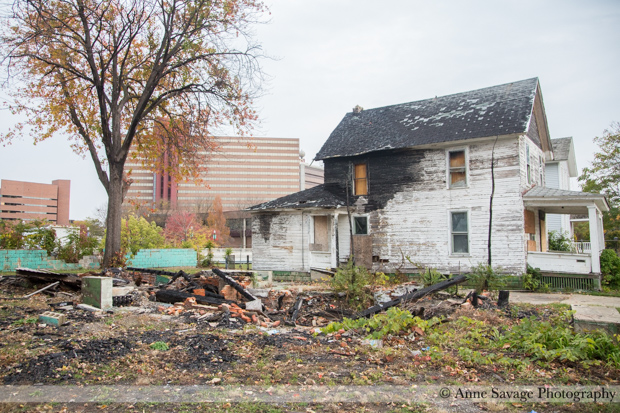
And here is where the problems of lead in the water are most acute. The people living in these neighborhoods are less likely to have access to the internet or other sources of information about the crisis happening all around them. They may have been drinking contaminated water for weeks or months before they became aware of the issue. And, because these homes are older and less likely to have had their plumbing systems upgraded, they are more likely to have lead in their tap water. It is a sadly classical case of people at the bottom of the economic ladder being most powerfully impacted by problems.
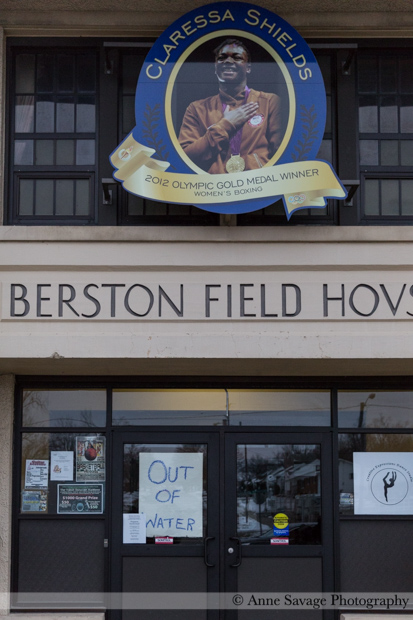 We came across a building with a huge handwritten sign in the window saying, “Out of Water”. However, in front of the building a group of young people were unloading a panel truck full of cases of water. The group was originally from Benton Harbor but some of them had moved to other cities. Now they had banded together to help another struggling city by getting donations of water bottles and driving them to Flint. Some members of the group run Treal Magazine (their Facebook page is HERE.) One of the members is responsible for a powerful video about life in Benton Harbor. Together they drove around Flint until they saw the “Out of Water” sign and pulled over to solve that problem. As we stood chatting, a line of cars pulled up, each receiving a case of water and then pulling away in a steady stream.
We came across a building with a huge handwritten sign in the window saying, “Out of Water”. However, in front of the building a group of young people were unloading a panel truck full of cases of water. The group was originally from Benton Harbor but some of them had moved to other cities. Now they had banded together to help another struggling city by getting donations of water bottles and driving them to Flint. Some members of the group run Treal Magazine (their Facebook page is HERE.) One of the members is responsible for a powerful video about life in Benton Harbor. Together they drove around Flint until they saw the “Out of Water” sign and pulled over to solve that problem. As we stood chatting, a line of cars pulled up, each receiving a case of water and then pulling away in a steady stream.
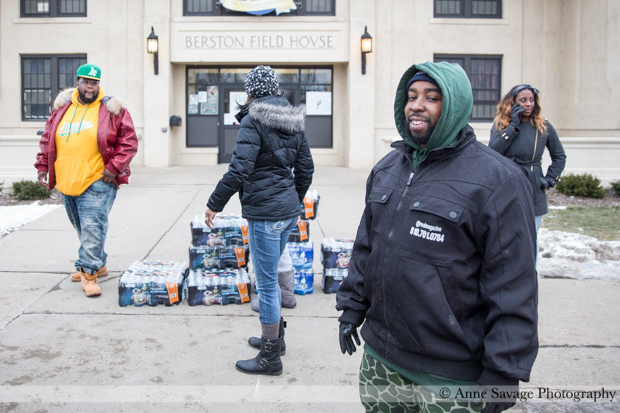
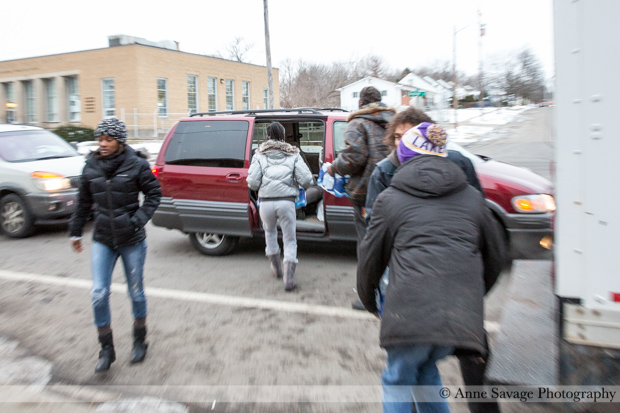
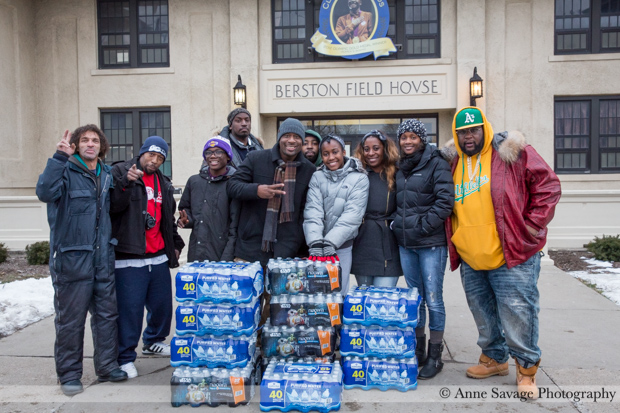
On the corner of Dupont and Pierson on the north side, we encountered a lit up traffic sign indicating a water distribution center ahead. This particular distribution center is Firehouse #6 and several groups from outside of Flint had shown up with bottled water. Due to this ad hoc volunteer effort, a temporary lane had been set aside with pylons so that people could pull up to the curb to receive cases of water.
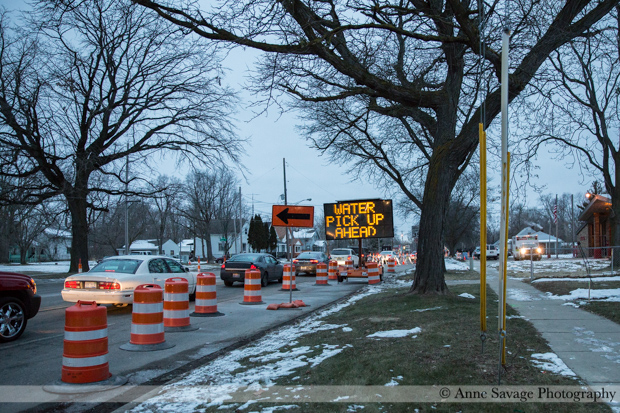
There were several groups distributing the curbside water. The Strong Riders Motorcycle Club who are also from Benton Harbor were there with their National President Jarrod Guidry, Vice President and Chaplain Cottonmouth Craig Johnson, and several others. They had brought two pallets of donated water and, as cars pulled up, they carried water from the giant stack, back and forth until it was gone.


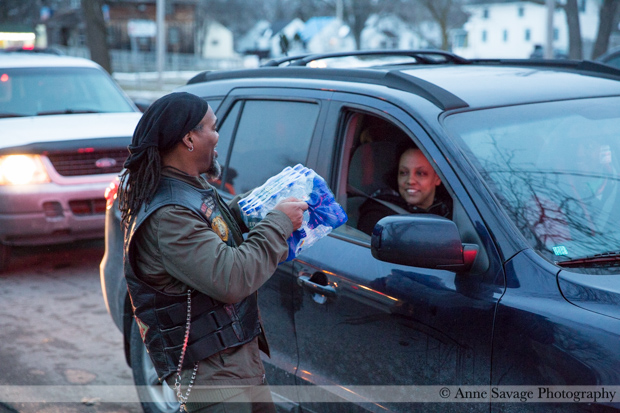
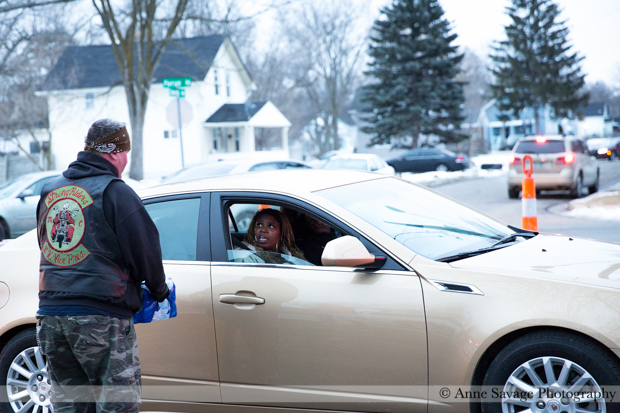
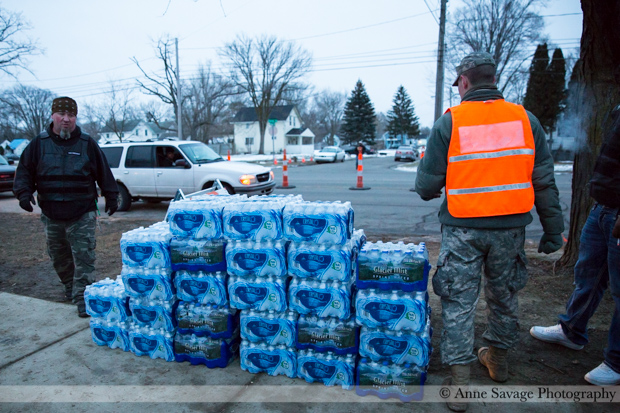
A few yards away were Ricardo Murillo, Benny Alicea, and Amir Kahn from Fairfield County, Connecticut. Seeing the plight of Flint in the news, they began collecting donations of water and funds last week. They convinced Enterprise Car Rental to donate a large van and drove 15 hours to Flint, some of it through the monster blizzard that has paralyzed the eastern seaboard, carrying 70 cases of bottled drinking water and 40 one-gallon jugs.
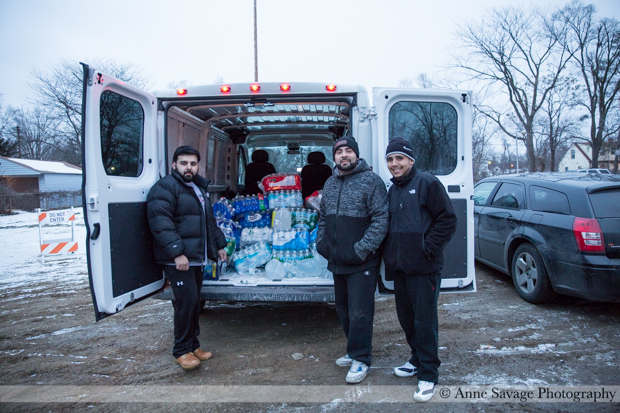
Once the three young men arrived in Flint, they stayed for two hours until all the water was gone before making the return trip back to Connecticut. Ricardo told me that they weren’t from any specific organization. “We just knew we had to help out our brothers and sisters in need,” he told me. “We had no address or clue where to go. We just knew we needed to reach Flint. When we got there, we hit a few neighborhoods and then to where we met you guys. After that, we stopped where locals were handing out water on Dupont St. and finished up there.”
Inside Fire Station #6 we found more men and women from the National Guard working with firefighters from the station to hand out cases of water, water filters, and replacement cartridges.
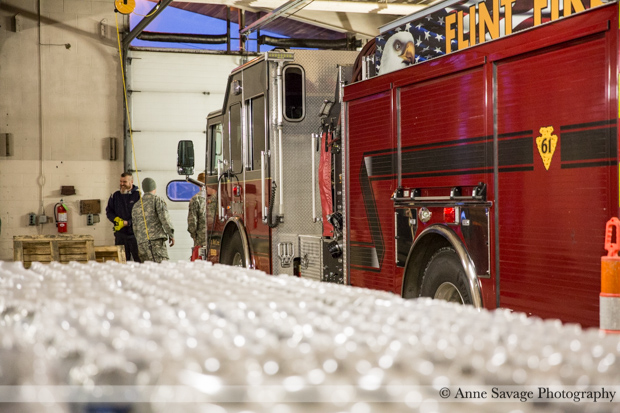
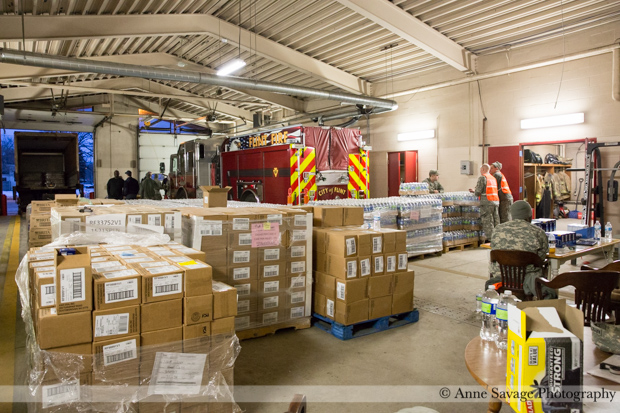
A pack of three replacement cartridges lasts nine months and the water filters have light indicators on them letting the user know when they need to be replaced. As people came in, they received instruction on how to use them properly.
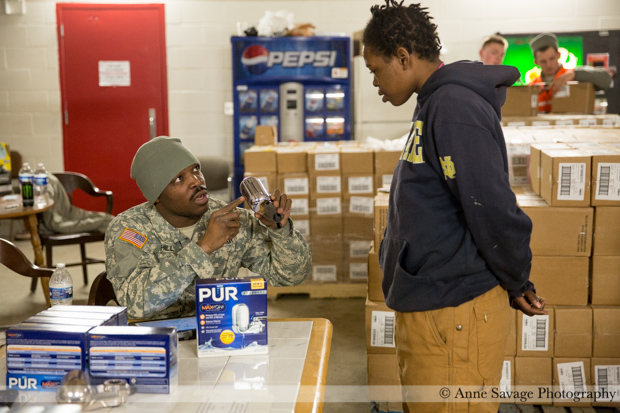
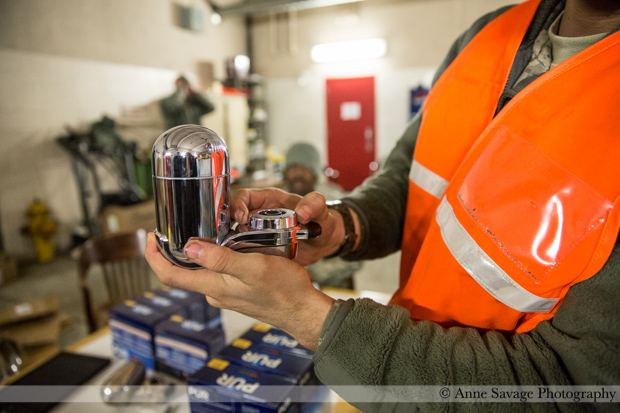
Our trip to Flint was illuminating. On one hand, you have businesses and others who are relatively unimpacted by the lead problem. For these folks, the national attention is overblown and is actually creating more problems for them than it solves because it frightens people away from their establishments, diminishes the value of their homes, and creates what feels like unnecessary hysteria around their beleaguered city.
On the other hand you have the people struggling to survive who too often live in communities most likely to face the brunt of this problem. These people are scared and have few resources to deal with the problem on their own.
Because the impact of lead is literally a house-by-house issue. If you live in the city of Flint, there is no way to know for sure if your water is safe to drink without testing it. Even former mayor Dayne Walling had to have his water tested before he could be sure it was safe for him and his family to use. The problems in Flint won’t be solved until every single one of the homes has their water tested for lead and, in homes where lead is found, the water lines and fixtures are replaced. It’s not until you drive around the city that you come to realize just how Herculean a task this is and how long it will take to complete.
In the meantime, Flint residents are tough with the tenacity to persevere. They’ve faced crises before and gotten through them and, true to their city’s motto “Strong, Proud”, they will do so again. And this time they are getting help from people they’ve never met and from places as far away as Connecticut and beyond.
